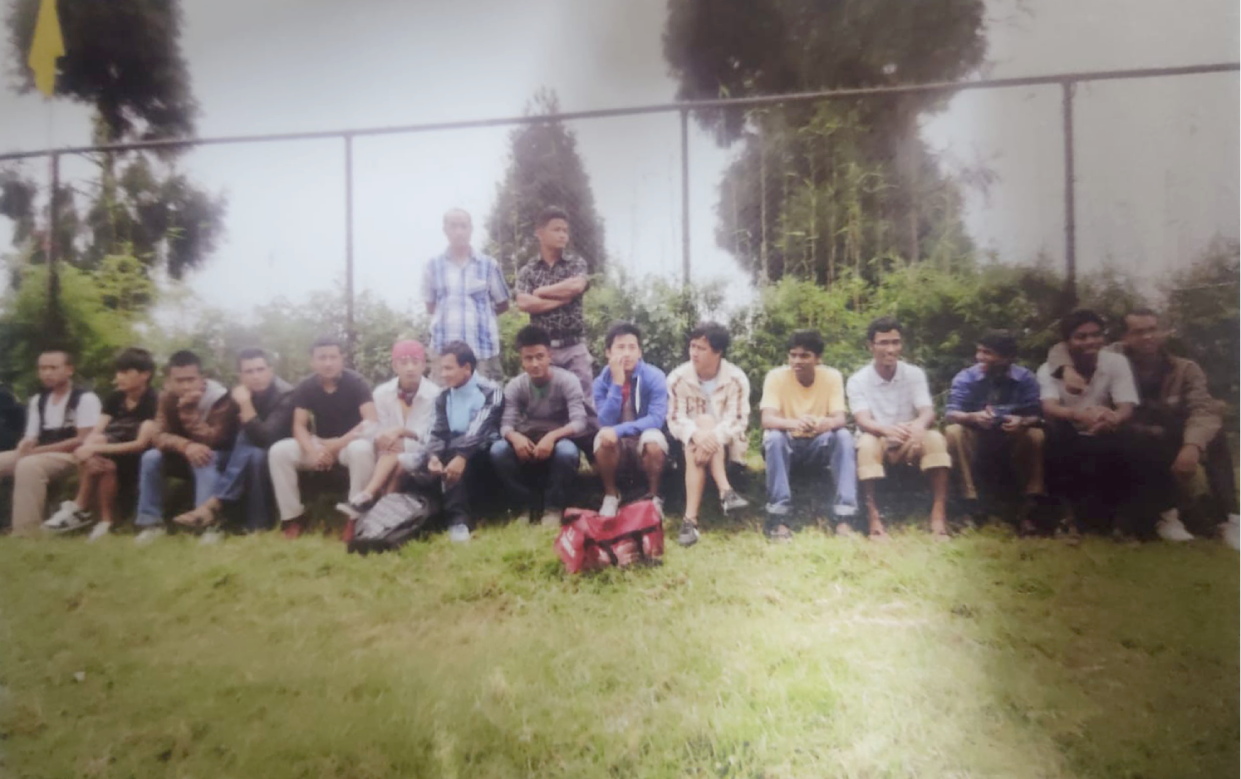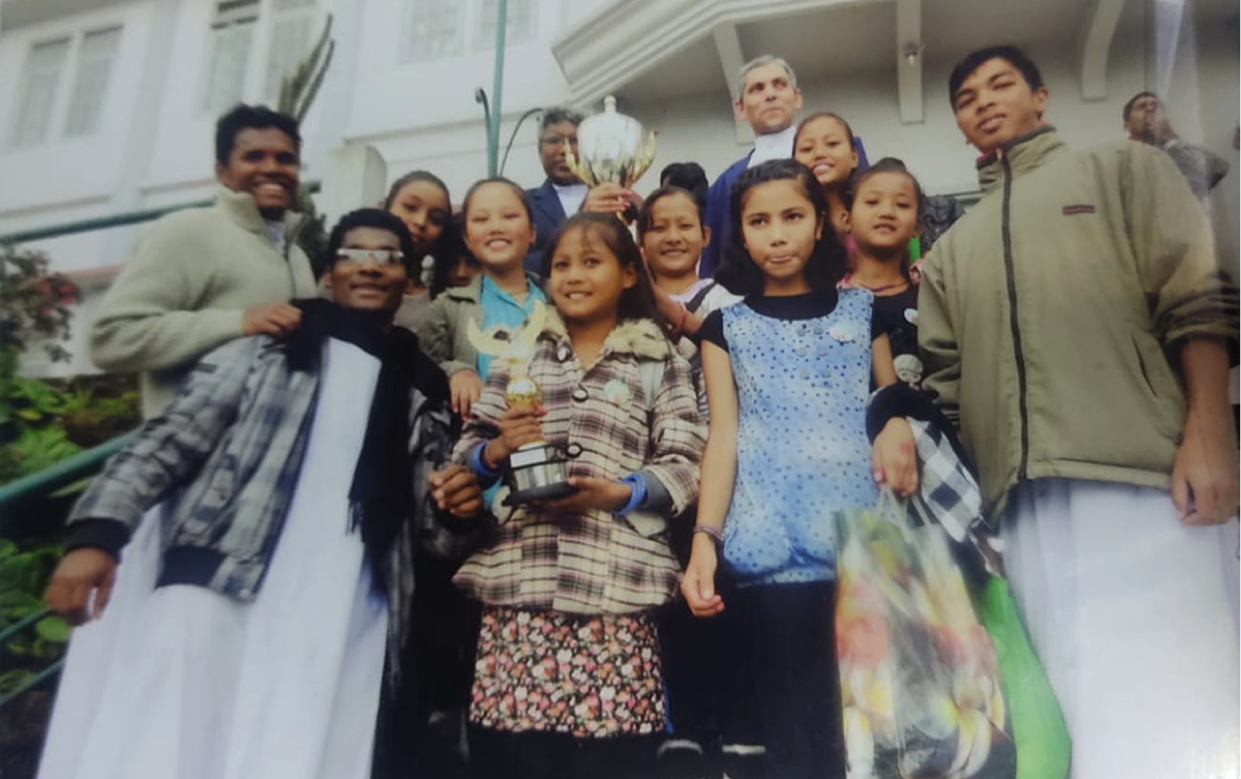How it all began
When Don Bosco began his work for young people he entered a world where young people were second-class citizens. They were the neglected lot, the ones who were more of a nuisance than a value. He changed that scene and made young people feel special. He had to start the difficult way: just wandering through the streets of the industrial city of Turin (Italy) to find these young people, who were often loitering around almost aimlessly or perhaps with intent to cause disruption or disorder. He soon found out that many of these young people were certainly not bad or evil- intentioned. He gradually got to understand that a bit of care and a little physical protection could do wonders.
He tried his best with the limited resources he had to organize spaces, and later a few makeshift shelters where he could gather groups of young people. His intention at the time was to impart some moral education to them while offering them entertainment as well. He devolved his style of work and his general philosophy from the experiences of those early days, where he believed that if he gave young people what they wanted (usually some simple form of play or entertainment) then they would give back what the educator wanted: which was more organized instruction geared towards becoming good citizens. He coined his own word, ‘oratorio’ (an Italian word), which broadly meant: a place of refuge (safety) and of prayer. The word has come to stay, even in its translated form (from Italian), to be ‘Oratory’. As it was essentially a place where young people gathered; the more modern term for such places today is ‘Youth Centre’. This then became the hallmark of Salesian work, especially if it was pioneering in any way.
In Salesian College the first Oratory was the ‘House Oratory’ started on the grounds of Salesian College, where it flourished from 1938 to 1942, the year when most of the Salesians (who were either Italian, German or European) had to go to concentration camps, or ‘internment’ as it was called. The Oratory was then revived soon after the war ended, in the early fifties, but it was confined mainly to the playgrounds of the College, or the ‘House’ as it was called.
Oratory at Salesian College
It was only on 25 August 1963, (soon after the new Bishop of Darjeeling, Eric Benjamin, had allowed the Salesians to take charge of pastoral work in the area) that the first Oratories were launched outside the House. Four of them were started: at Gorabari (the College), Shantirani (Hopetown- below Sonada town), Margaret’s Hope (down the valley where there was a large football ground) and Rangbul (near Ghum). Each Oratory (or Youth Centre) was manned by a team of six Brothers (Clerics) animated and mentored by a member on the Staff. At this time in the College the Brothers belonged to Sodalities, or prayer-study groups, that had specific goals, e.g. study of Don Bosco’s Life, or promoting the study of Christian Ethics, or understanding the culture of particular tribes in Assam or elsewhere. It was not difficult to re-align the goals of these Sodality groups to more realistic Youth initiatives. The Brothers soon got their bearings and found youth work more tangible and purposeful. These Youth Centres were initially only for boys, but soon the girls too got included, and it became evident that the Brothers needed lay collaborators (men and women) to assist them, in catering to the girls and boys, in their prayer-activity routines.
The response from the people around, especially of the villages that had experienced some form or other of ‘youth involvement’ by the Brothers, was rewarding and pleasing to say the least. Soon requests began pouring in from other areas and villages and the Brothers and their Superiors had a task on their hands. In twenty-five years, more than forty villages were contacted through Youth Centre activities. In 1988 there were fifteen centres manned by three Brothers in each group. The College considered the involvement of the Brothers (students/clerics) of vital importance for their integral formation (training). It then became imperative that all the Brothers get involved in this integral activity as it furthered their social, emotional and spiritual growth. Youth Centre work is the first experience that most of the Brothers would have of a direct encounter with young people which they will have to continue when they leave their ‘Philosophy’˚ studies in Salesian College to go for their three-year ‘Practical Training’˚ as teachers in different schools in their respective Provinces.
Youth Centres Today
The Youth Centres are spread out over a radius of around 12 kms, and that is the walk that the Brothers have to do each Sunday to and from College. Usually, about 25 to 40 young people (boys and girls) attend each Youth Centre. Thus the Brothers [students] reach out to around 600 children and youth each Sunday. It is a service that the Bishop of Darjeeling, the Superiors and the elders of the areas where the youth are contacted are very pleased about.
The Brothers start out quite early every Sunday for their Youth Centres. They usually get ready all the equipment they need the night before: the footballs, the badminton rackets, the cricket bats, the indoor games, the guitars, the bongo drums, the Tablas, the art equipment (paint, brushes, rolls of art paper), fret-work saws and plywood. The 2 or 3-hour programme in each centre varies, but most of them begin with some activity or other, usually followed by some outdoor games. Others ensure the indoor games are kept ready as the weather can sometimes be unpredictable. Usually after the games there is a bit of singing, or others get on to some simple lessons in English. At other times the Brothers show them some comic strips, either in slides or as video programmes (depending on what equipment they have). Some others run a Bingo game. The Brothers try and enlist local leaders to end the day with some moral stories and/or lessons, almost always delivered to the children/ young people in Nepali, the language of the area.
Occasionally the Brothers end up leaving a leaflet with either some simple English lesson on it, or some cartoon with a message (usually in Nepali). The Brothers of course use the occasion to tell the children about the life of Don Bosco. Some Youth Centre groups have older children who can read English, and so the Brothers bring along some books the children can borrow and read over the week that lies ahead.
Most centres organize an Annual Day when the older folk also come along and enjoy a long afternoon of fun and games, and some refreshments too. What this event does is that it tells them that there is more to it all, and that they would do well to come to the big Annual Youth Rally, held in the College grounds. This often implies that the centres need to get more help from the local people, so that their children are transported to the College. The Annual Youth Rally brings out a lot both from the Brothers and from the children. Many inter-Youth Centre games and competitions are organized, and some important figure is invited to be the chief guest. On one occasion Tenzing Norgay (who conquered Mt Everest in 1953, and then was the Director of the Mountaineering Institute in Darjeeling) was the Chief Guest.
Some of these facilities are often taken to a new level. In 1988 the Brothers organized a leadership camp in Darjeeling for selected individuals from the different Youth Centres. On that occasion 25 young men and women from ten youth centres participated. Often the needs of the areas where the Brothers run their youth centres get their other needs attended to as well. The Brothers got some bigger organizations (NGOs and funding organizations) to get involved, and some community development programmes got introduced. So, for instance, some community halls got built or repaired; other places had their drinking water services improved; other places conducted courses on job-oriented trades like tailoring, typing, knitting etc. for the locality; others had Spoken English classes introduced; others still had health and sanitation improved and other health programmes introduced, e.g. BCG camps, anti-TB campaigns, anti-drug abuse campaigns, distribution of medicine to the elderly; and scholarships provided for the education of poor children.
Developments and Issues
As money was always the basic requirement, each youth centre was encouraged to raise funds for its own activities. Some of them went quite elaborate and even contacted foreign funding agencies like Missio, IGSSS, etc. for assistance. Quite a few community development projects were done with the help of CRS food for work programmes. Roads have been repaired or even newly made or paved with stones through these projects.
Youth Centres have also had their fair share of problems. Some youth centres had to be closed down because of interference from political parties or due to infighting among the villagers themselves. Lack of support from the local elders and lack of personnel (i.e. especially not a sufficient number of Brothers to take up a centre) were the other causes. Most of the Brothers of course faced the problem of linguistic barrier. Nepali is the local medium and some Brothers found it hard to get to grips with a new language in the middle of the demanding studies (dual degree) they were engaged in. Some others didn’t think they needed to invest time and effort on a new language which they may not use again, once they left the College. However, the College authorities have taken steps to address this by organizing holiday classes in spoken Nepali. Each batch as they come in to join the college have an initial in loco intense language learning programme in one or the other village centres where there are facilities to house a group of 20-30 students.
But it is clear to see that the Youth Centres are here to stay: and the Brothers are enthused into doing whatever they can to keep them alive. They believe the College motto ‘flamma ardens et lucens’ (the flame that burns and shines) urges them on to continue serving the youth around them so that they (the Brothers) can make their (the young people’s) world a better place to live in. The Youth centres had their own flags and a common motto: ‘Be Good and Do Good’; with an anthem that celebrated the beauty of the valley visible from the precincts of the college.
Youth Fest
One of the ‘off-shoots’ of the Youth Centre programmes is the Youth Fest. It is an annual event for The Youth Centres. Calcutta has a Youth Fest for schools in and around Calcutta and has almost unrestricted entry to members of schools and organisations. The Salesian College Youth Fest allows for the participation of 15 to 20 members from every Youth Centre. The Youth Fest is a full-day programme in which young people from various centres spend a day together studying themes like ‘Better Youth, Better Society’, or ‘Today’s Youth, Tomorrow’s Society’,
‘Youth Problems Today’, or ‘Youth For Peace’, etc. This helps these young people deepen their awareness of societal conditions today. The organizers use group dynamics, music performances, drama and dance, and also prayer-sharing exercises. Youth Fest was first introduced in 1981, when around 300 young people participated.





